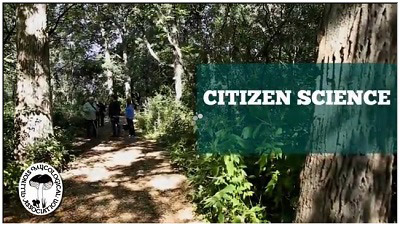Citizen Science.
Citizen Science is basically non-professionals, however you want to classify them, as helping the professionals to conduct research, document mushrooms, where they are, what they are, how they’re related.
The Mycological Society of America and the North American Mycological Association, the professional group and the amateur group, got together several years ago to start the North American Mycoflora Project. NAMA, the national group, is going to work with the different regions across the country for the local mushroom clubs in the different states.
I’m basically one of the people in the Chicago area that’s going to work with the Illinois club, and hopefully also the Wisconsin club, and a little bit with the Indiana club, on how to document mushrooms in our area of the Great Lakes.
The idea of the North American Mycoflora: it’s a very large goal to figure out all the different fungi we have across the continent, Canada, Mexico, US. And that takes a lot of work out in the field collecting and documenting. It’s a huge project because we have well over ten thousand different kinds of fungi.
Documenting what’s out there takes the time of somebody, doesn’t matter – professional or amateur – to get out in the woods and find them, because mushrooms, unlike plants, only come up for a short period of time. You find different species different years. If you’re involved with the club or your local university or museum, that might have a mycologist, this helps them out on collecting and documenting the fungi.
Specimens are actually the dried collections of the fungi that you find: the mushrooms or polypores or whatever that you find. If you can dry them with just a food dehydrator and document where you found them and when, habitat information, as much location information as you can get, that helps document what you found. A photo only goes so far as it shows us what it looks like but you can’t get DNA out of a photo. Because you need a specimen to get that data, get the DNA sequence, and get the proof that that’s a new species.
Any time spent out in the woods, or whatever habitat you’re looking in, looking for mushrooms, you’re going to get new records. It doesn’t matter if it’s the same location, or a different location, or a different month. It’s just repeated observations is what builds up our knowledge of what’s there.
Illinoismyco.org ; mycoguide.com ; Music (cc) Podington Bear
